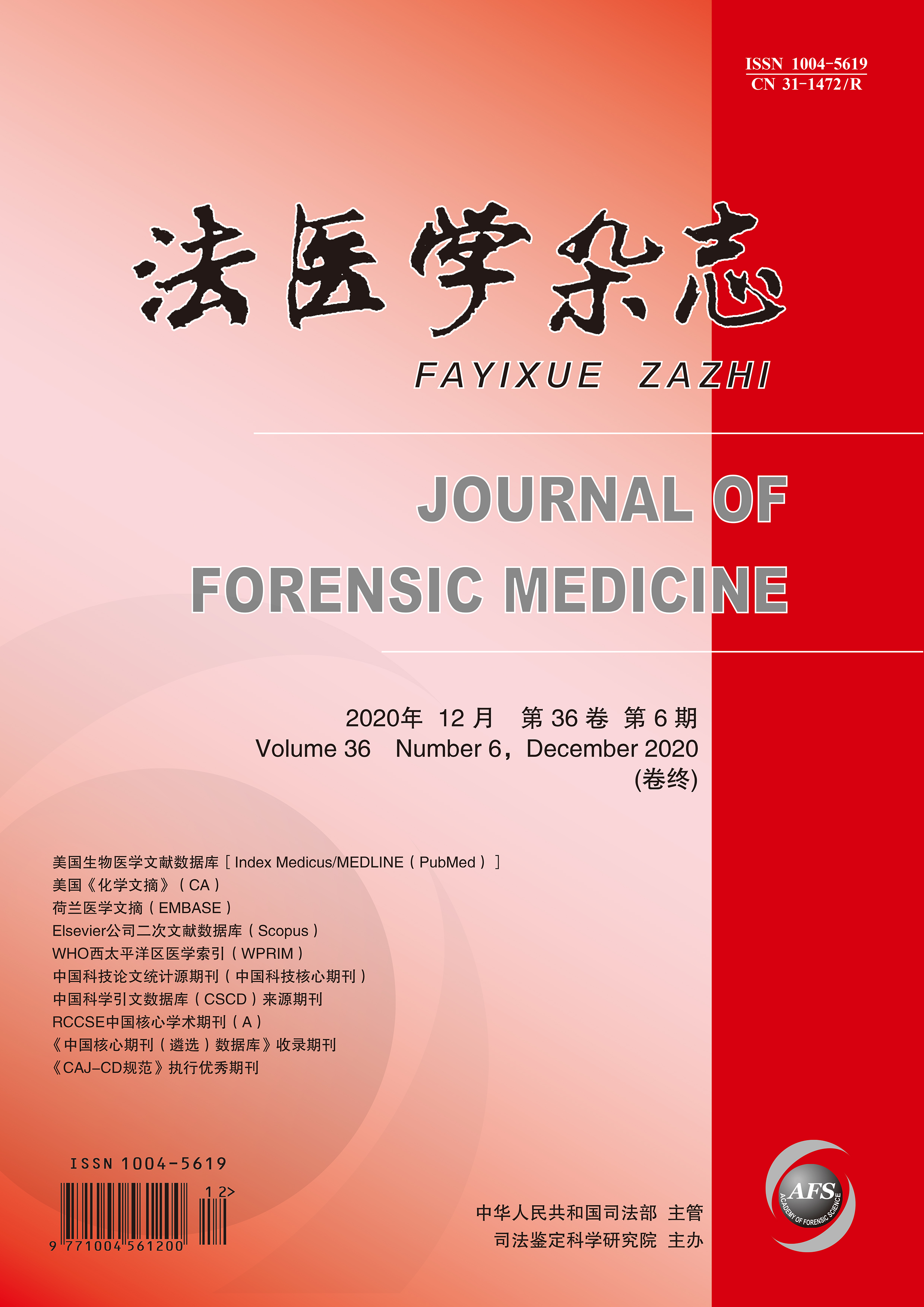|
|
Metrological Analysis of the Projects in the Field of Forensic Science Funded by the National Natural Science Foundation of China between 2000 and 2019
SHI Ge-fei, HE Xiao-dan
2020, 36(6):
772-783.
DOI: 10.12116/j.issn.1004-5619.2020.06.006
Objective To understand the trend of funding in the field of forensic science by analyzing the projects funded by the National Natural Science Foundation of China (NSFC). Methods Based on the data of funded projects in the field of forensic science published on NSFC website in the twenty years from 2000 to 2019, the trend of project number and fund, project type, discipline type, funded institution and personnel were analyzed with metrological methods. The funding theme was analyzed through multi-methods. Results In the twenty years, NSFC funded 352 projects in the field of forensic science, including 9 project types, 47 institutions and 213 persons. General programs (184 projects), forensic toxicology, pathology, and toxicology analysis (H2301, 188 projects), and the Academy of Forensic Science (37 projects) had the most funded projects. NSFC funded 174.69 million yuan in the field of forensic science. The Excellent Young Scientists Fund (3.50 million yuan/project), forensic toxicology, pathology, and toxicology analysis (H2301, 78.64 million yuan), and Xi’an Jiaotong University (23.78 million yuan) had the most funding. The differences in the number and funding of subsidized projects between the first ten years and the last ten years had statistical significance (P<0.05). The main targets of funding were toxicology research, evidence-related research, estimation-related research, brain injury research, et al. The field of research mainly funded from 2010 to 2019 was interdisciplinary research. Conclusion Since 2010, the number of project, funding of project, the number of institutions and persons funded by NSFC in the field of forensic science showed an increasing trend. The types of disciplines, types of projects and themes of projects are more diverse, which will promote the long-term development of basic forensic research in China.
Related Articles |
Metrics
|


